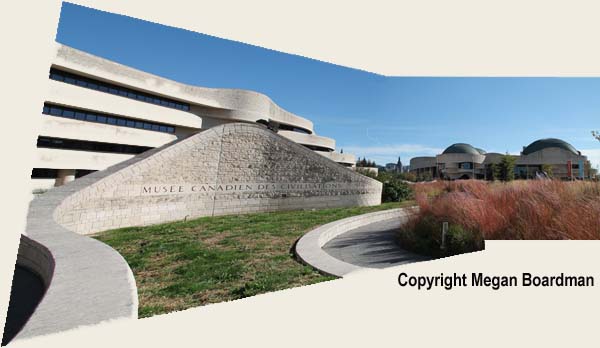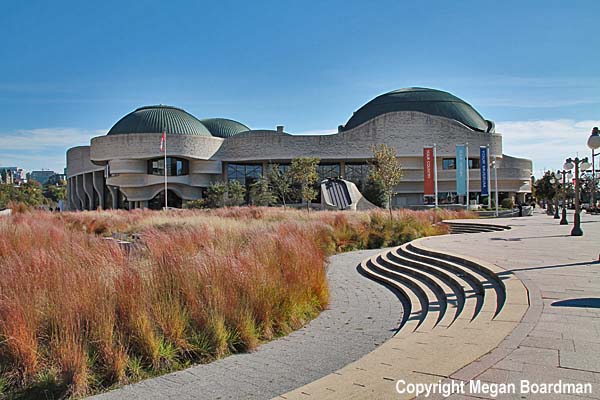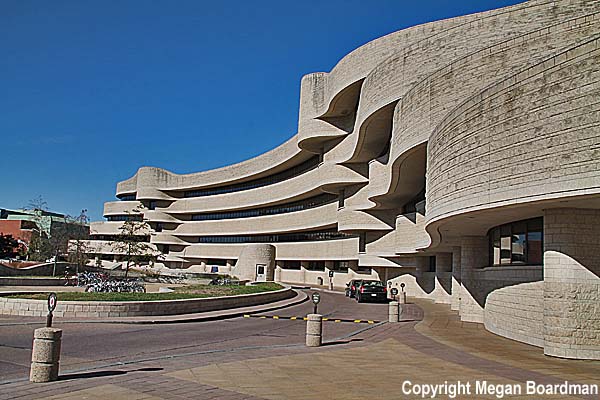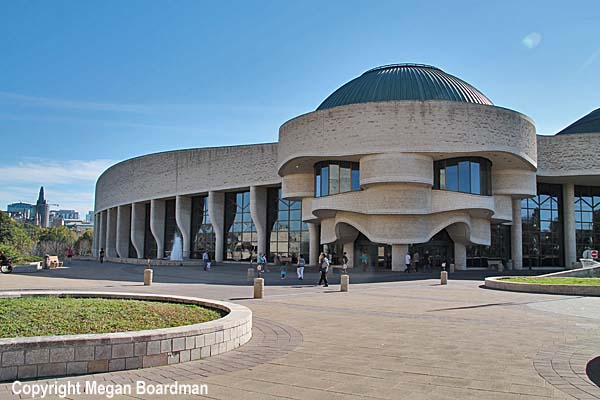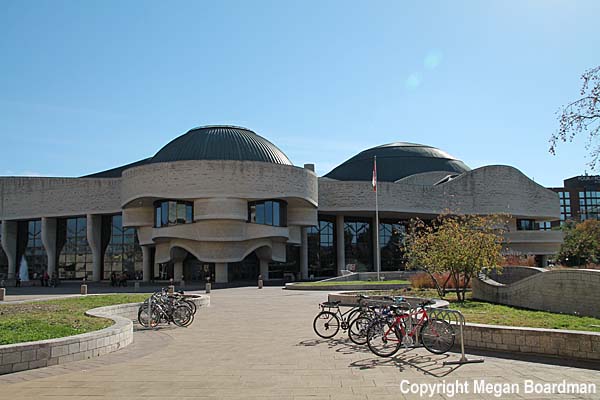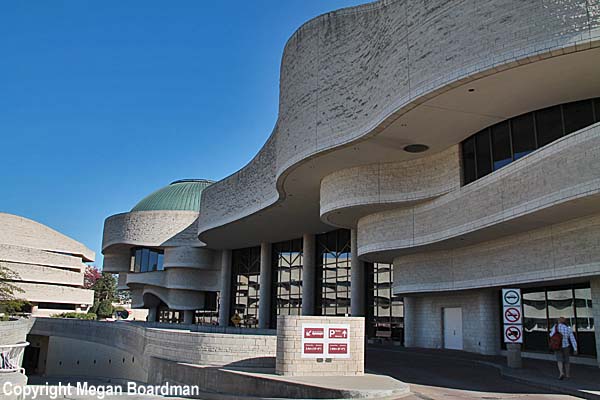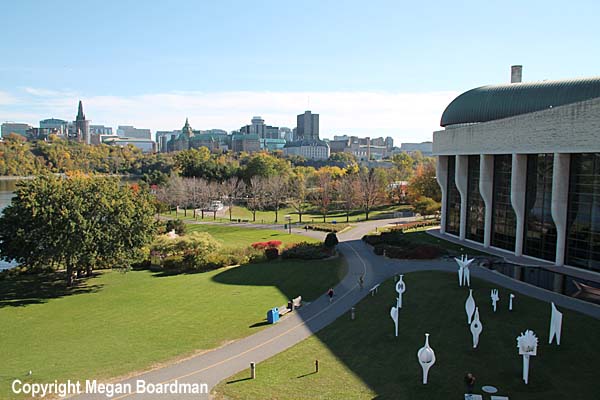Museum of
Civilization, Gatineau, Quebec, Canada
************* - Inside - Among the wonderful features inside
the building is the Grand Hall that includes a
reconstruction of a Pacific Coast foreshore with a row
of amazing totem poles infront of the highly decorative
native houses.
 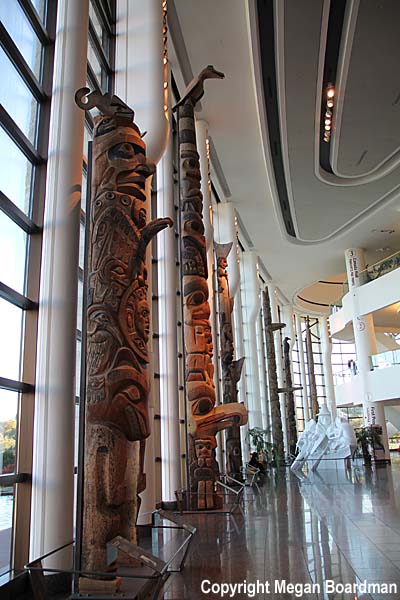 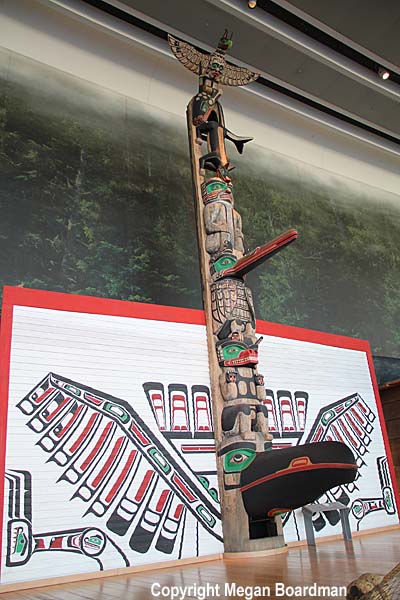 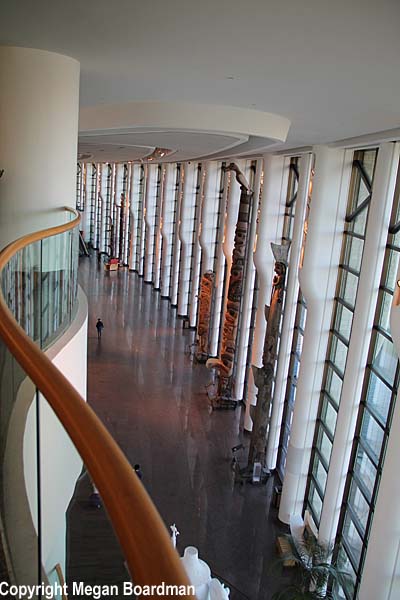 The hall also contains the original
plaster version of the "Spirit of Haida Gwaii", a
sculpture by late great Haida artist Bill Reid.
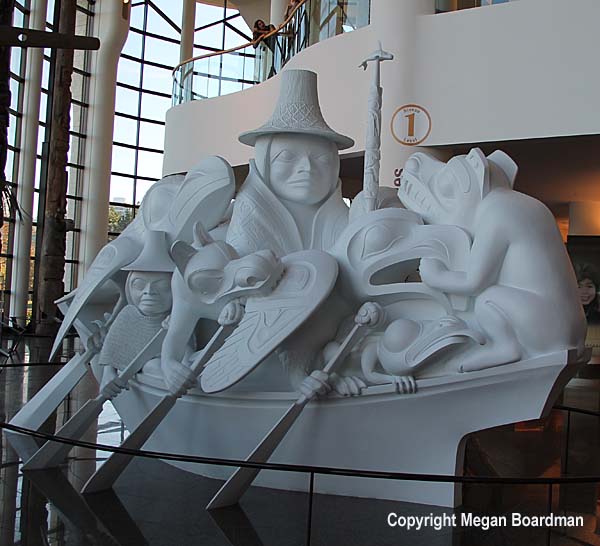 According to the Wikipedia entry for this important sculpture, the passengers on the canoe include, " ... Raven, the traditional trickster of Haida mythology, holding the steering oar; Mouse Woman, crouched under Raven's tail; Grizzly Bear, sitting at the bow and staring toward Raven; Bear Mother, Grizzly's human wife; their cubs, Good Bear (ears pointed forward) and Bad Bear (ears pointed back); Beaver, Raven's uncle; Dogfish Woman; Eagle; Frog; Wolf, claws imbedded in Beaver's back and teeth in Eagle's wing; a small human paddler in Haida garb known as the Ancient Reluctant Conscript; and, at the sculpture's focal point, the human Shaman (or Kilstlaai in Haida), who wears the Haida cloak and woven spruce root hat and holds a tall staff carved with the Seabear, Raven, and Killer whale." 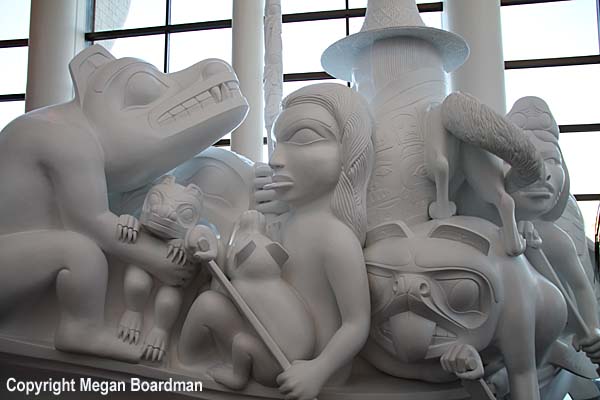  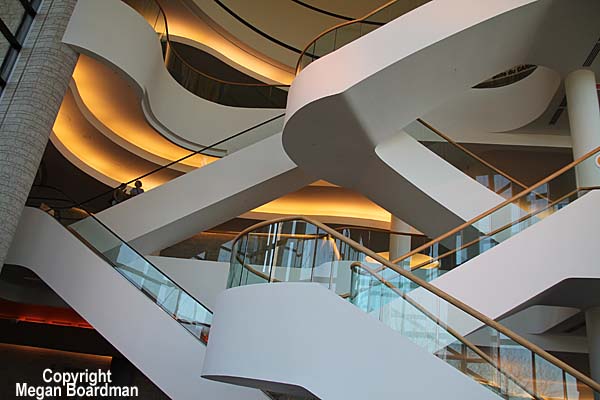 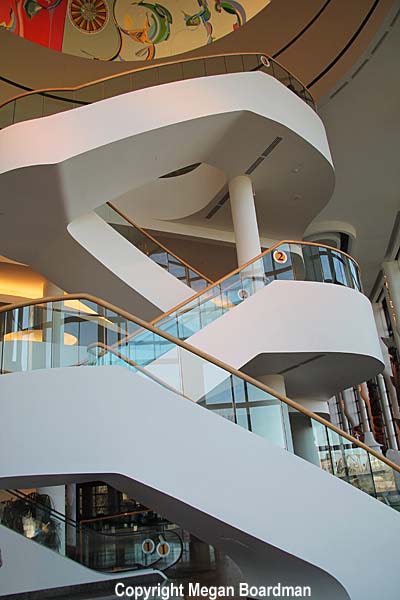 The dome at the top of this wonderful
staircase is decorated with an abstract painting by the
native artist Alex Janvier and his son Dean. It is
entitled "Morning Star" and as the museum
explains, "The circle motif represents the circle
of life: spiritual and physical, human and natural.
Human life, for example, is believed to make a
complete circle; a person dies and then life starts
again. Likewise, the colours used are meaningful.
Among the Chipewyan for example, white, yellow, blue
and red are significant colours, seen more
frequently than others. Among Native groups
generally, these colours are often seen in regalia.
In addition, the creation of four distinct areas of
colour is important. The number four is significant
for Native Peoples: 4 seasons, 4 cardinal points, 4
directions. Janvier refers to these as "natural
indicators". The painting is a commentary on
the clash of cultures that took place after
Europeans arrived in North America and encountered
Native peoples. This is one of the major themes
addressed in the Museum's permanent exhibitions."
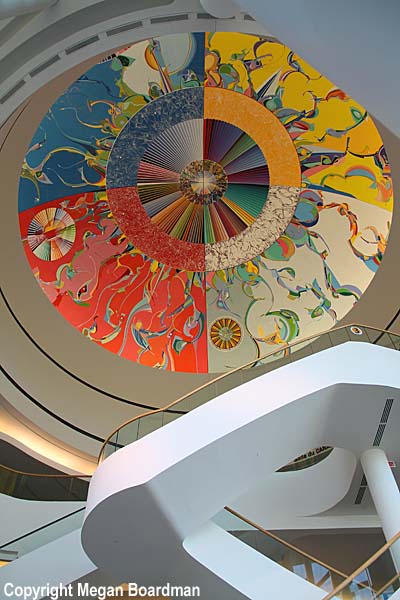 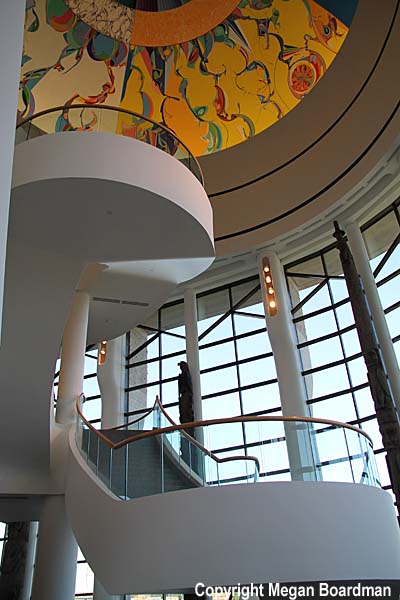  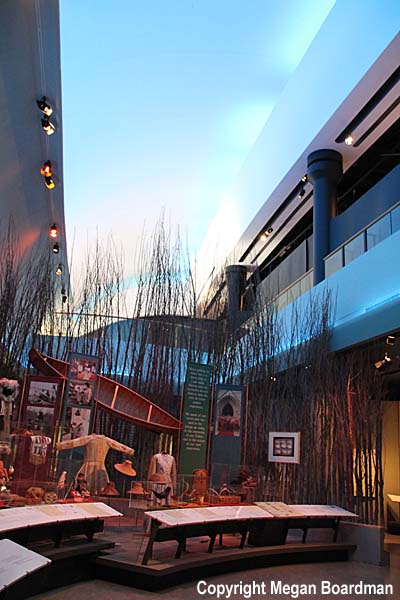 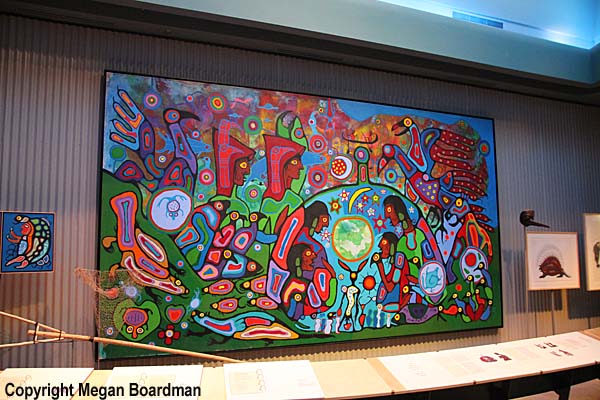 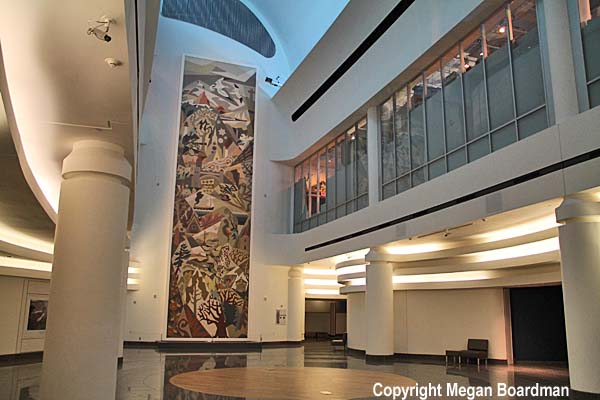 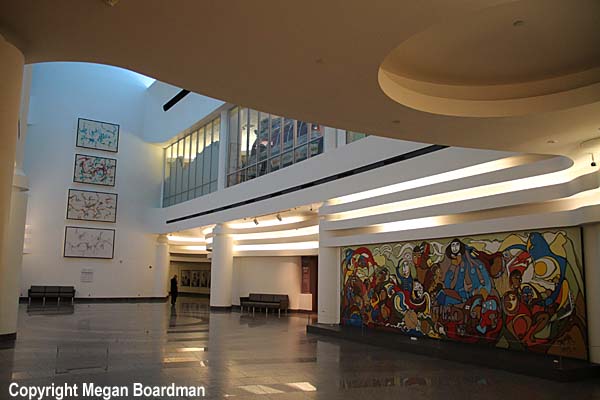 Close Window 
|
||||||||||

